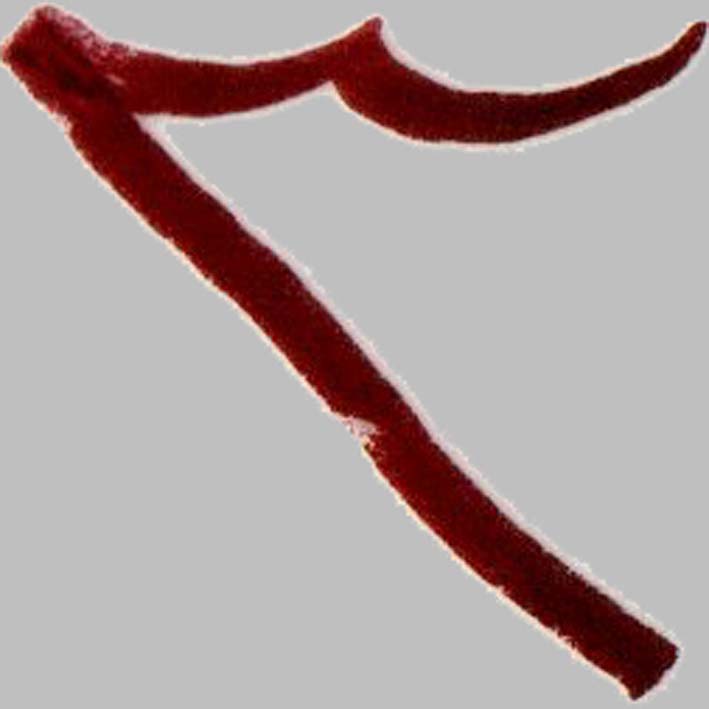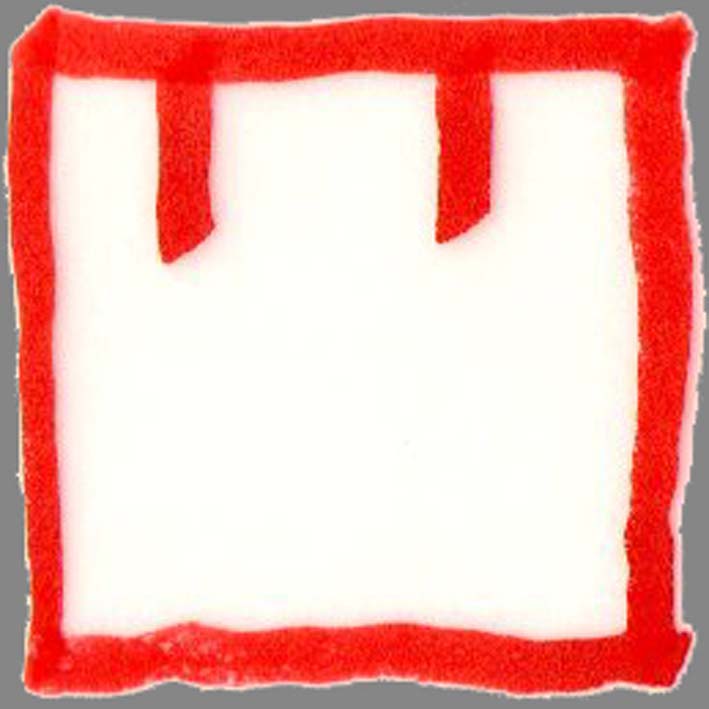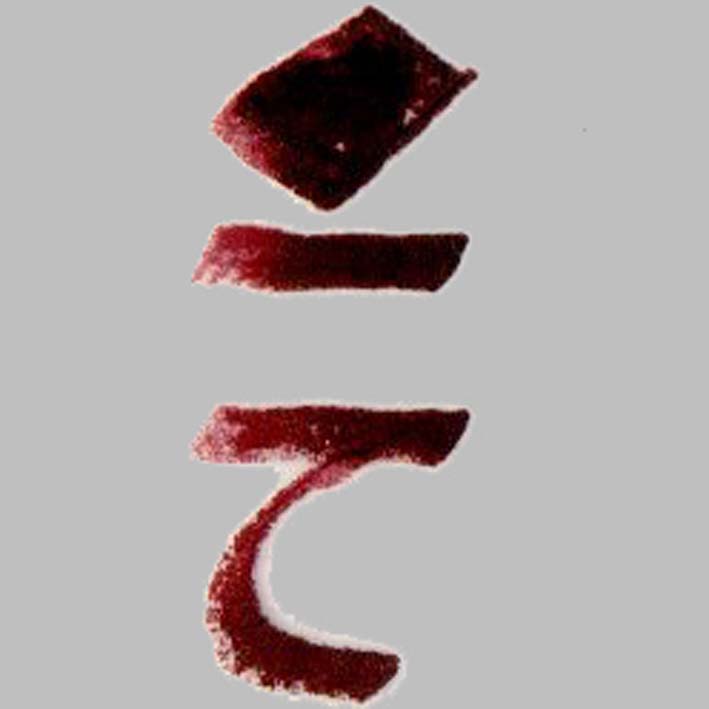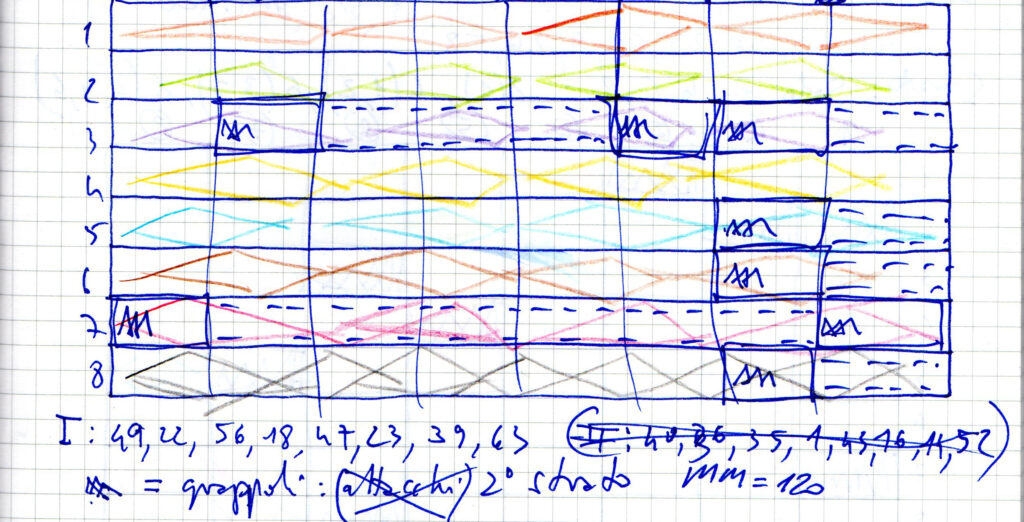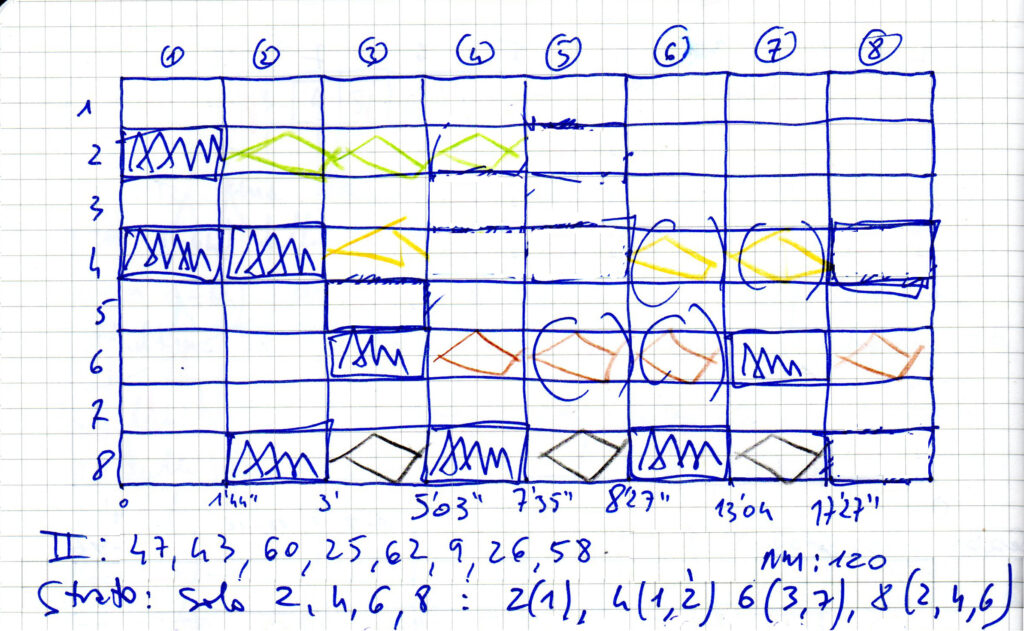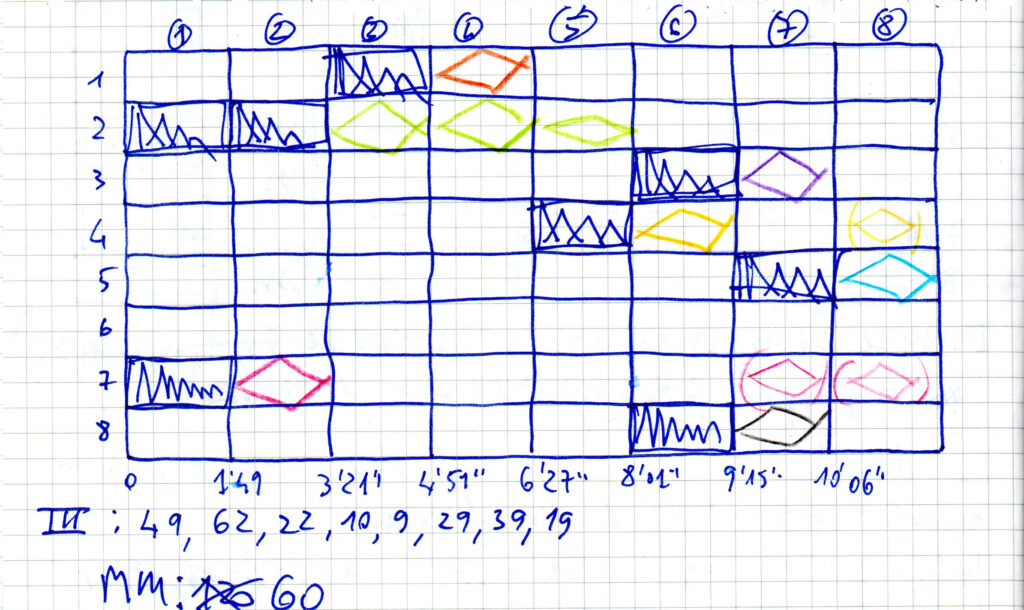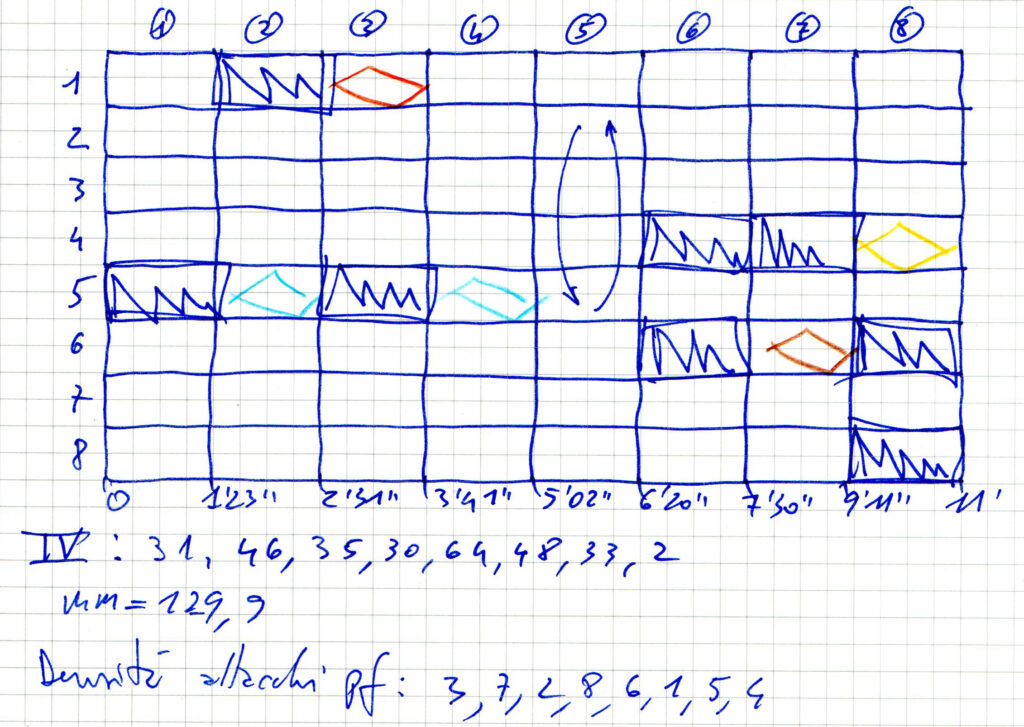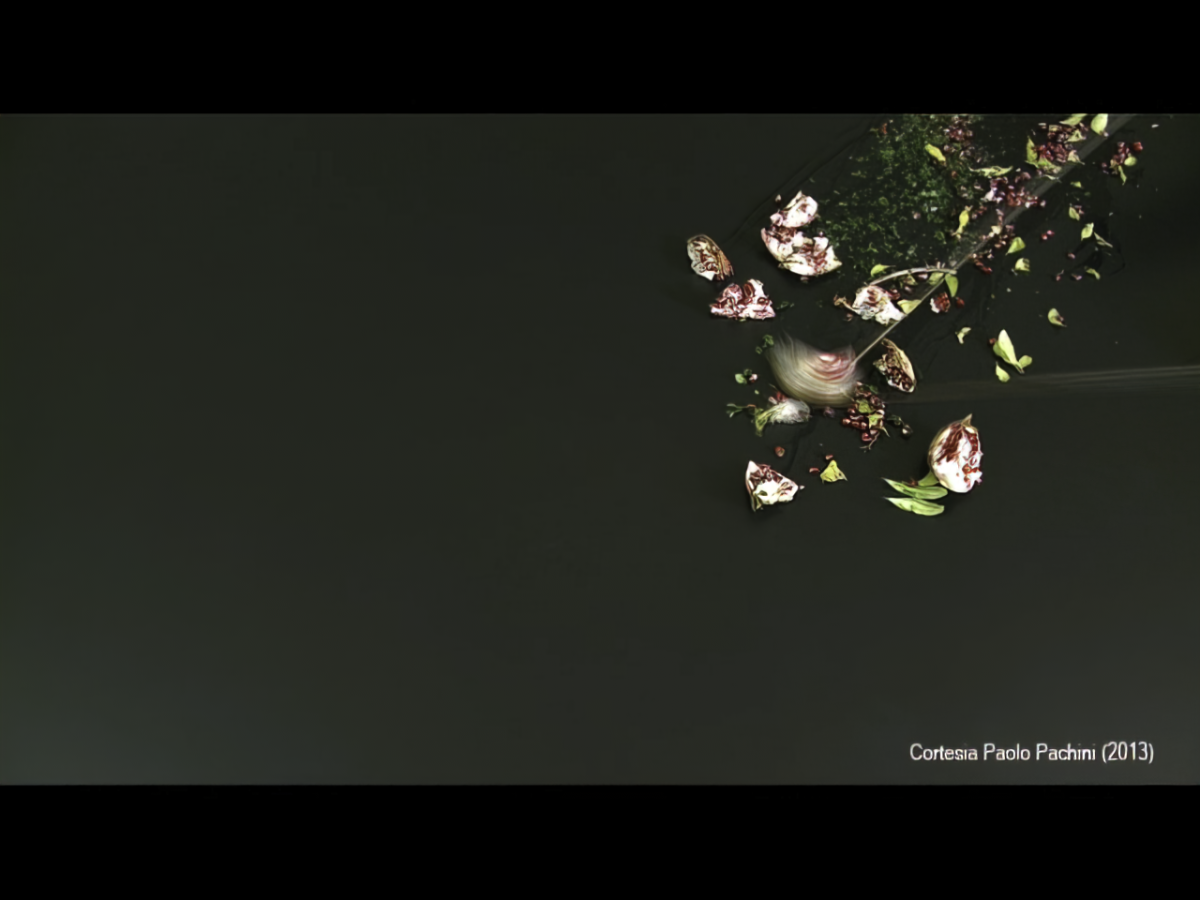(2023) musica elettronica [7’21”]
Si tratta della composizione algoritmicamente più complessa e allo stesso tempo musicalmente più semplice di quelle che compongono un più ampio progetto dal titolo “Lo spirito del rischio” che presenta opere di Anthony Braxton per sax solo e di Roberto Doati per elettronica ispirate alle musiche di Braxton. Innanzitutto ho suddiviso la composizione RFO – M°-F (32) (1972) di Anthony Braxton (incisa su LP America 30 AM 011-012) in 32 sezioni. Ogni sezione è stata sottoposta a diversi tipi di trattamento del segnale, ma con l’obiettivo finale di sciogliere l’armonia interna dei suoni di Braxton in una sorta di canto, quasi evocando quello degli uccelli. RFO – M°-F (32) è infatti dedicataa Dave Holland, che nello stesso anno esordiva come leader nel disco “Conference of the Birds”. I vari strati che compongono la mia musica sono:
- una risintesi, mediante Phase Vocoder, di singole parziali dei suoni di sax controllate nel tempo e nella disposizione stereofonica grazie al generatore di eventi CMask
- tre diversi tipi di convoluzione utilizzando alternativamente suoni di sax, suoni del contrabbasso di Dave Holland, canti di uccelli
- una modulazione di ampiezza di canti di uccelli su deconvoluzione dei suoni di sax.

